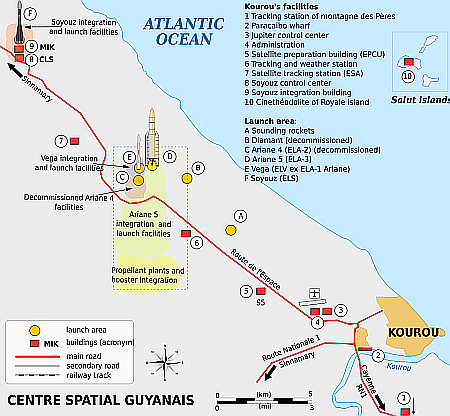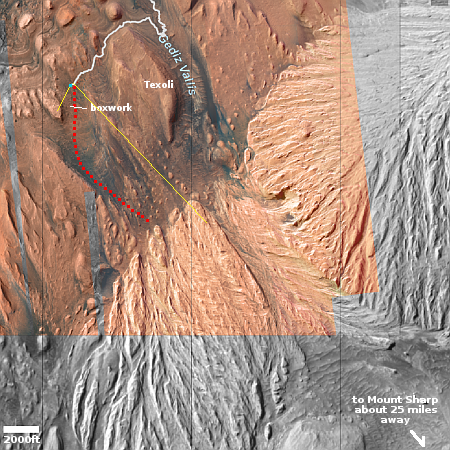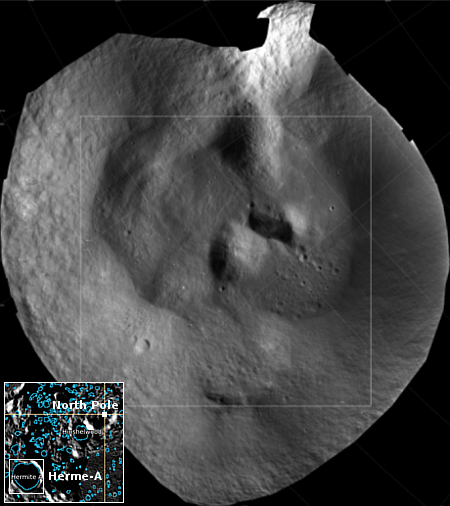French startup Latitude to spend $9.3 million on building its French Guiana launch facility

The French Guiana spaceport. The Diamant launchsite is labeled “B.”
Click for full resolution image. (Note: The Ariane-5 pad is now the
Ariane-6 pad.)
The French rocket startup Latitude has announced it will spend $9.3 million to build its own launchpad at the spaceport in French Guiana, where hopes to launch its Zephyr rocket in 2026.
In a 23 June update, Latitude confirmed the Guiana Space Centre as the launch site for the inaugural flight of its 19-metre-tall, two-stage Zephyr rocket, which is designed to deliver payloads of up to 200 kilograms to low Earth orbit. The site was one of two under consideration, with the company also having committed to developing launch infrastructure at SaxaVord Spaceport in Scotland. When that partnership was announced in March 2022, Latitude, then known as Venture Orbital Systems, aimed to carry out its first launch from SaxaVord in 2024.
Construction of the ELM-Diamant shared launch facility began in 2025 and is expected to be completed by 2026. According to Latitude’s 23 June update, the company will work with CNES and the European Space Agency in the coming months to implement its dedicated launch infrastructure at the site. This will be followed by the inaugural launch of its Zephyr rocket in 2026.
It is not clear exactly how that ELM-Diamant launch site will be shared. France’s space agency CNES (which operates French Guiana) had previously said it wanted all the new European rocket startups that wanted to launch from there to use a common launch infrastructure, thus requiring them to share technology as well as redesign their rockets to fit CNES’s requirements. The rocket startups objected, but it now appears two startups, Latitude and PLD, and come to an agreement of some sort.
This deal also suggests that Latitude is shifting away from using the Saxavord spaceport in the United Kingdom, possibly because it has seen the difficult regulatory hurdles required there and has decided French Guiana is a better option.

The French Guiana spaceport. The Diamant launchsite is labeled “B.”
Click for full resolution image. (Note: The Ariane-5 pad is now the
Ariane-6 pad.)
The French rocket startup Latitude has announced it will spend $9.3 million to build its own launchpad at the spaceport in French Guiana, where hopes to launch its Zephyr rocket in 2026.
In a 23 June update, Latitude confirmed the Guiana Space Centre as the launch site for the inaugural flight of its 19-metre-tall, two-stage Zephyr rocket, which is designed to deliver payloads of up to 200 kilograms to low Earth orbit. The site was one of two under consideration, with the company also having committed to developing launch infrastructure at SaxaVord Spaceport in Scotland. When that partnership was announced in March 2022, Latitude, then known as Venture Orbital Systems, aimed to carry out its first launch from SaxaVord in 2024.
Construction of the ELM-Diamant shared launch facility began in 2025 and is expected to be completed by 2026. According to Latitude’s 23 June update, the company will work with CNES and the European Space Agency in the coming months to implement its dedicated launch infrastructure at the site. This will be followed by the inaugural launch of its Zephyr rocket in 2026.
It is not clear exactly how that ELM-Diamant launch site will be shared. France’s space agency CNES (which operates French Guiana) had previously said it wanted all the new European rocket startups that wanted to launch from there to use a common launch infrastructure, thus requiring them to share technology as well as redesign their rockets to fit CNES’s requirements. The rocket startups objected, but it now appears two startups, Latitude and PLD, and come to an agreement of some sort.
This deal also suggests that Latitude is shifting away from using the Saxavord spaceport in the United Kingdom, possibly because it has seen the difficult regulatory hurdles required there and has decided French Guiana is a better option.







